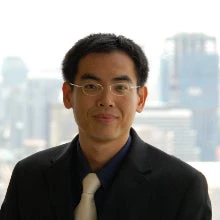 Girly, a woman from the BARMM, carries her baby at home. Just a few hours earlier, Girly received a dose of COVID-19 vaccine at the Marawi City Hall Complex in Lanao del Sur. Photo: Remar Pablo
Girly, a woman from the BARMM, carries her baby at home. Just a few hours earlier, Girly received a dose of COVID-19 vaccine at the Marawi City Hall Complex in Lanao del Sur. Photo: Remar Pablo
As the Bangsamoro Autonomous Region in Muslim Mindanao (BARMM) moves towards full autonomy in 2025 it needs to continue prioritizing health sector reform. Currently the region has some of the poorest health outcomes in the Philippines, but the Bangsamoro government, with assistance from the World Bank, is working on a master plan that will support a stronger health sector and advance their commitment to universal health coverage.
Identifying health priorities
A Health Financing System Assessment (HFSA), supported by the Australian Department of Foreign Affairs and Trade through the Advance UHC Multi-Donor Trust Fund, was completed by the World Bank in 2020. It identified access to health resources, equity, gender, and sustainable health financing as some of the issues most needing attention.
For example, a household survey, conducted under the HFSA, found that only 34% of children aged 12-23 months had basic vaccine coverage, while only 10% were fully vaccinated and nearly a quarter had no vaccine history at all. The survey also drew out a need to engage primary caregivers in a “women first approach” to improve health outcomes through interventions in nutrition and breastfeeding practices, given mothers make up over 90% of primary caregivers.
A funding analysis showed that about 65% of the region’s health funding comes from the national government. Moreover, the various health resources come through uncoordinated parallel funding streams which makes it difficult for health providers to plan appropriately, especially at the primary care level.
More efficient budgeting
In 2019, the region’s transition to BARMM gave the local government a chance to rethink its approach to governance and services. Starting in 2020, the Philippine government gave the BARMM authority over its own budget allocation for health. Subsequently, the annual BARMM Ministry of Health (MOH) budget has more than doubled and it is now able to program regular operating budget for primary care facilities, as well as for public health programs that previously relied on sub-allocations from the national Department of Health and support from other partners. This proved to be particular helpful when the region had to respond to the COVID-19 emergency in 2020.
Improving vaccination programs
More efficient budgeting mechanisms have helped but there is still a lot to be done. For example, only 27% of the BARMM’s population was fully immunized against COVID-19 as of March 2022, well below the national count of 73%. Difficulties with public financial management have made it hard to access resources that would support deployment and communication efforts in the COVID-19 vaccination program. Another example is the National Immunization Program which received a large budget allocation to buy vaccine antigens. This may not translate to a significant improvement in the immunization coverage because the cold chain capacity is not up to par in terms of staffing, training, logistics, information system, and equipment.
A master plan for health
There is no shortcut for BARMM to achieve its UHC aspirations. The HFSA identified a few of the immediate challenges for the regional government to reflect on as the Bangsamoro transitions to full autonomy; a process that has been extended for another three years from 2022 to 2025. The BARMM government needs to continue refining and executing carefully thought out evidence-based plans. For this, the MOH, with technical support from the World Bank, is developing a long-term master plan for health that will enable BARMM to reach its health sector goals step by step.
A backbone for long term change
In developing the master plan, a few things are worth keeping in mind. Firstly, though BARMM has gained allocation authority over a larger slice of health funding, this constitutes only about half of the overall health resources. The allocation authority for the other half still remains with the national government. Secondly, important decisions need to be made about the backbone for long-term changes. This includes considering laws to define the role of local government units as part of centralized health service delivery and financing systems; and setting strategies for health financing, human resources, and health information systems. Resolving these as part of the long-term master planning process will help pave the way for a smoother ride to better health care for the people of BARMM.




Join the Conversation